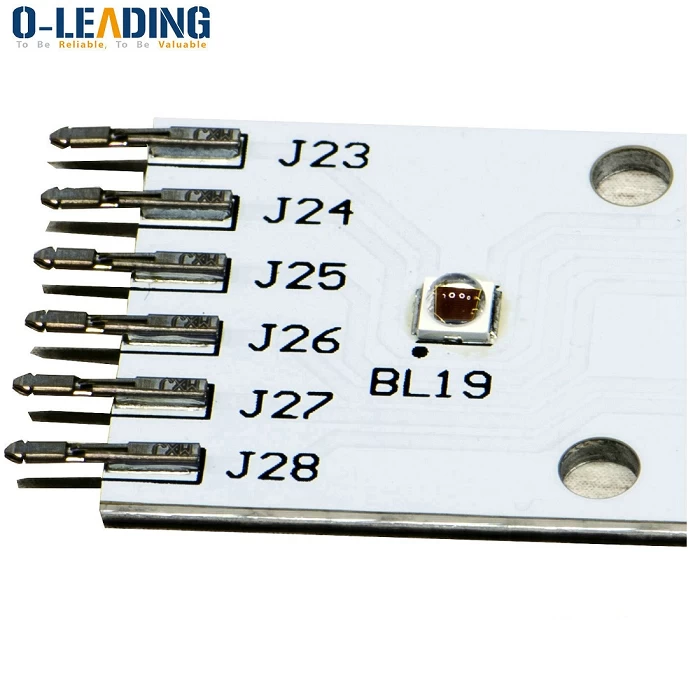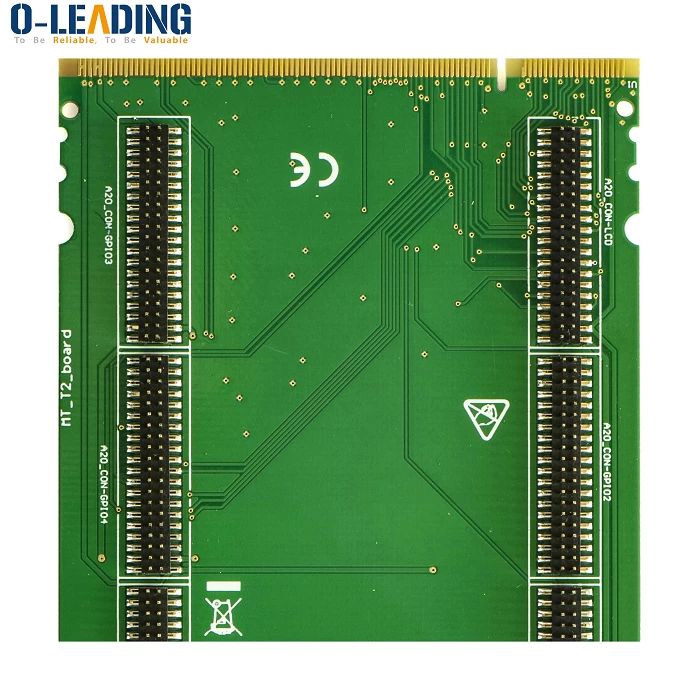PCBA manual welding process standard
PCBA soldering iron
The ferrochromium used in the SMT electronic EMS foundry is a heating welding tool in the SMT and DIP process, which has the characteristics of fast heating and light weight.Commonly used electric ferrochrome is divided into internal heating type and external heating type. The chromium iron head of internal heating type electrochromium is outside the heating wire. This kind of electrochromium iron is fast and light in weight; the chromium iron head of external heating type electrochromium is inserted inside the heating wire. It heats slowly, but relatively Speak more firmly. Electric ferrochrome is directly heated by 220V AC power supply, the power cord and the housing are insulated, and the resistance is greater than 200M ohm.
Electronic EMS OEM PCBA welding standard process
(1), PCBA solder principleWelding: It is to use solder as a medium and heat to make A.B two metals join and achieve the purpose of conduction.The bonding force between the two metals depends on the alloy layer produced on the surface of the solder and the metal.
(2), soldering tools and materialsThe soldering tools mainly include: electric soldering iron, tweezers, vacuum suction pen, constant temperature hot air gun, positioning jig, brush, flux bottle, exhaust pipe, tin suction device, etc.
1. Electric soldering ironThe soldering iron is mainly composed of a heating element, a soldering iron head, a handle, a power cord, and a temperature controller.
2. Use of soldering iron tipThe soldering iron tip should be taken out of the impurities of the cleaning and heating body (tube) daily. When using the new soldering iron tip, first set the temperature at 100℃, and then set it to 200℃ after reaching the temperature. Noodles, set the temperature to the desired temperature after 5 minutes, this can extend the life.

LEDstrip PCB board and electronic components assembly PCB & PCBA manufacturer
(3), soldering iron temperature control
1. Read directly according to the scale on the temperature indicator, and adjust to positioning according to O/I regulations. The actual temperature is based on the actual measurement value.
2. The temperature setting of the soldering iron is generally 380+/-30 ℃, if the process is specially indicated, the process of the station shall prevailUse 60W lead temperature controlled soldering iron for electronic parts. (360±15℃)60W lead temperature controlled soldering iron is used for mechanism parts. (420±20℃)Electronic parts use 100W lead-free temperature control soldering iron. (390±10℃)Due to the advent of the lead-free era of PCBA electronics manufacturing, the high heat capacity, small process window, and low wettability brought by the lead-free electrical equipment process have brought great challenges to the PCB. In particular, the increase in lead-free soldering temperature has changed from the melting point of traditional leaded solder Sn63Pb37 of 183°C to the typical lead-free soldering point of 217-227°C, and the temperature around 40°C has deteriorated.
(4) Classification of tin wireAccording to the different proportions of tin and lead, it can be divided into: low temperature tin wire and high temperature tin wire
1. Low temperature tin wire: Sn/Pb=63/3763% tin, 37% lead
2. High temperature tin wire: Sn/Sb/Pb=10/5/8510% tin, 5% antimony, 85% lead The soldering iron temperature required for low temperature soldering is: 310±20℃The soldering iron temperature required for high temperature soldering is: 360±20℃Low temperature tin wire (63/37) has a lower melting point and is eutectic. Its solder joints are superior to other tin wires because:
a. Because it does not undergo a semi-molten state and solidifies or liquefies quickly, it can complete the soldering work as quickly as possible.
b. It can start soldering at a lower temperature and has the best performance ratio.
c. Strong penetrating power, can penetrate very small voids on the metal.
(5)、How to use sponge
1. Before use: Clean the dust and dirt on the sponge first, and add appropriate water.
2. In use: Do not press the tip of the soldering iron against the sponge. You should wipe it gently to prolong the service life of the sponge and soldering iron tip.
3. After use: The sponge should be cleaned and the internal water content should be dried as much as possible to avoid the rust of the sponge sponge.Note: When the sponge is gently taken, it is appropriate that the water droplets are not dripped.

control board design and manufacturing pcb and PCBA assembling
(6), the role of flux
1. Remove oxides on the surface of the welded metal.---Remove dirt
2. A liquid protective film is formed on the surface of the welding object to isolate the surrounding air at high temperature to prevent the reoxidation of the metal surface.---Prevent oxidation
3. Reduce the surface tension of the solder and increase the fluidity.--- Increase solder fluidity
4. At the moment of welding, the molten solder can be replaced to complete the welding smoothly.---Quick welding
(7) Precautions during welding
1. The falling point of the tin wire is at the contact point of the soldering iron and the soldered object, so that the tin wire melts faster and the effect of heat transfer is collected.
2. Move tin wire or soldering iron during soldering.
3. The lower part of the soldering iron must make the soldering iron head and the surface of the second soldered object have the largest heating contact surface.
4. During the soldering process, the contact between the soldering iron and the solder joint is within 2-3 seconds, and the parts will be damaged after a long time.
5. The soldering iron should be away from the insulation when soldering.
(8), good solder joint requirements
1. Good combination-round, full and smooth, shiny.
2. Good conductivity-no high resistance is formed at the solder joint (do not move parts before solidification to cause short circuit, open circuit and cold welding).
3. Good heat dissipation--even diffusion and full diffusion.
4. Easy to test-Except for high pressure points, there should not be too much solder, so as to make the outline of parts clear and identifiable.
5. Easy to repair-do not stack parts for assembly unless specified by the manufacturing engineer in special circumstances.
































